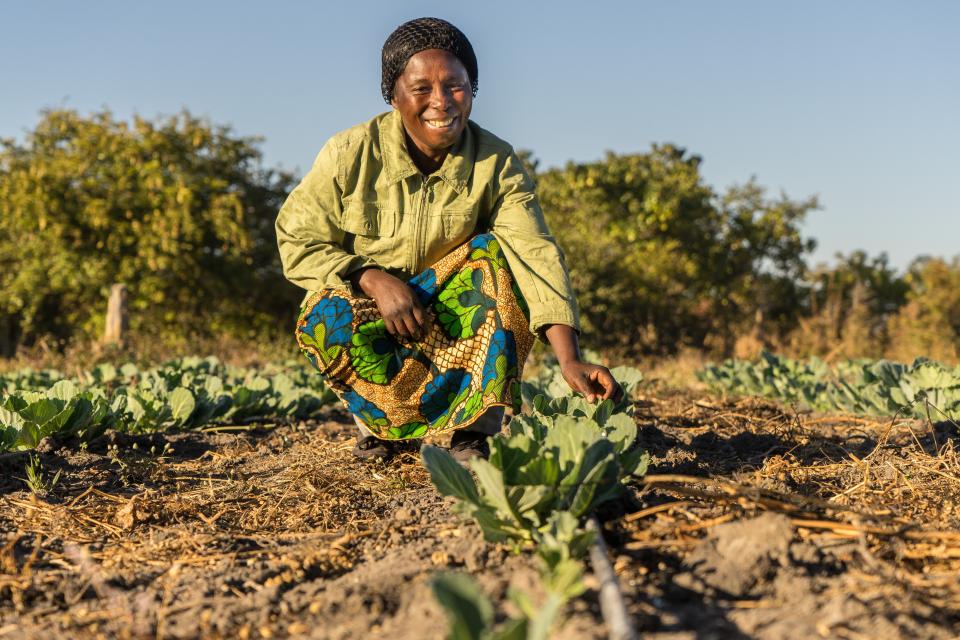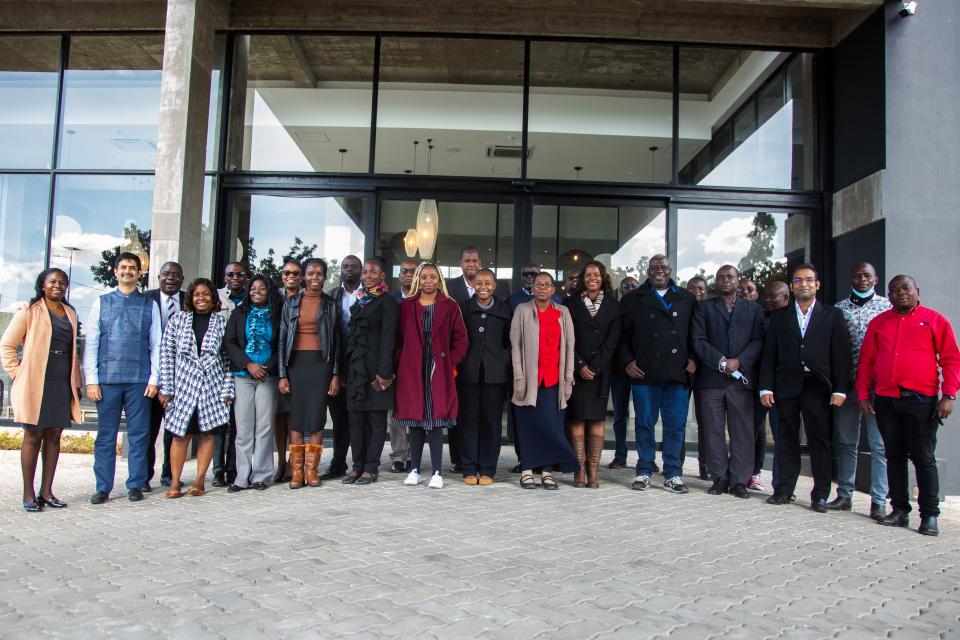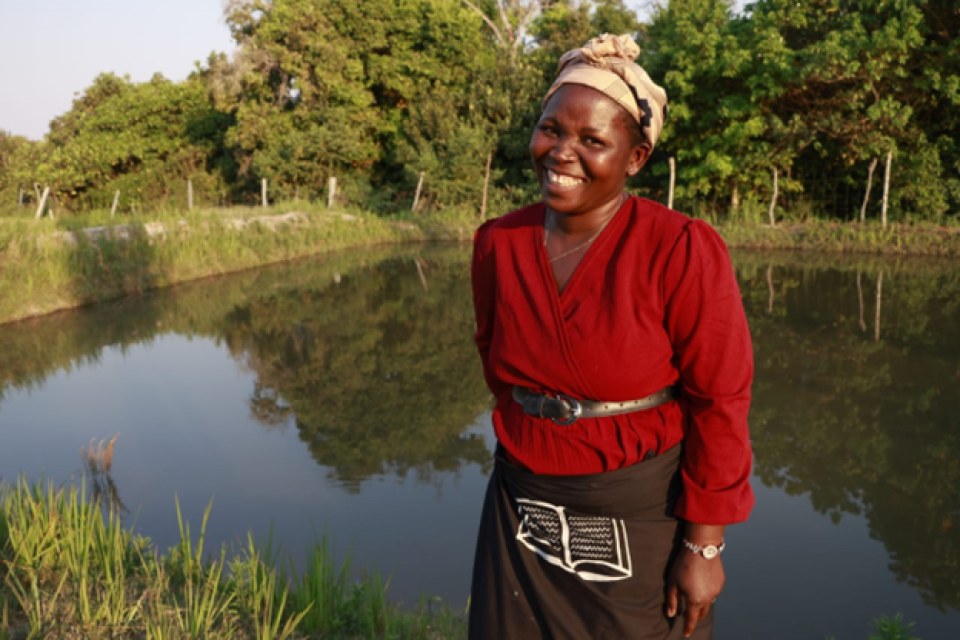

Zambia launches national Crop Monitor to enhance agricultural resilience amidst drought crisis
The Zambia Crop Monitor was launched at a recent workshop held in Lusaka, Zambia to empower farmers using Earth Observation (EO) data and remote sensing technology. This initiative aims to improve crop condition assessment, benefiting agriculture across the country.
Southern Africa is facing an unprecedented climate crisis, with the 2023-2024 drought causing the worst mid-season dry spell in over 100 years and the lowest mid-season rainfall in 40 years, exacerbated by the El Niño phenomenon. The severe impact on the population has led to the declaration of a national disaster in Malawi, Zambia, and Zimbabwe. In Zambia alone, 1 million hectares of maize crops have died, affecting nearly half of the country's maize-growing area and leaving 6.6 million people in need of humanitarian assistance. This disaster has highlighted the need for proactive monitoring and integrated Early Warning Systems (EWS) that can provide accurate and timely information on crop conditions. Such systems are essential for effective government action and policy implementation together with agriculture delivery organizations to enhance food security and support smallholder farmers who depend on their crops for both livelihoods and sustenance.
Earth Observation (EO) data offers crucial support by allowing continuous monitoring of environmental conditions. It facilitates the identification of early indicators of drought and crop stress, allowing authorities anticipate and mitigate agricultural risks before they escalate. EO data also enhances resource allocation by identifying the areas that are most vulnerable to climate impacts, thereby optimizing disaster response efforts and increasing resilience among communities that rely on agriculture for their livelihoods.
To address the growing challenges for agriculture, the Zambia Crop Monitoring and Learning Exchange workshop to advance agricultural monitoring using EO data was jointly organized by the Alliance of Bioversity International and CIAT, the NASA Harvest team at the University of Maryland (UMD), the IGAD Climate Prediction and Application Centre (ICPAC), and the Group on Earth Observations Global Agricultural Monitoring (GeoGLAM).
The workshop facilitators supported training, learning exchange and the launch of Zambia's National Crop Monitor. Led by Dr. Catherine Nakalembe (Assistant Professor at the University of Maryland/ Africa Lead of NASA Harvest), the national crop monitors are a GEOGLAM effort that aim to enhance global agricultural monitoring through advanced remote sensing tools. The launch was supported by a capacity-building workshop in Lusaka, Zambia, inaugurated by Mr. Lyson Phiri - Deputy Director of the Zambia Meteorological Department on behalf of the Permanent Secretary of the Ministry of Green Economy and Environment. With strong representation from Zambia's 10 provinces, including professionals in meteorology and agriculture, the training brought together 58 participants including crop monitor leads from Ethiopia, Kenya, Rwanda, Tanzania, and Uganda. The facilitators shared frameworks for adopting and adapting Earth observations and success stories of using platforms and tools in support of national monitoring and agricultural statistics systems from their respective countries.

From top left: Esther Makabe (GeoGLAM), Catherine Nakalembe (NASA Harvest), Majambo Gamoyo (Alliance of Bioversity International and CIAT), David Ongo (ICPAC) presenting during the workshop.
The workshop took a hands-on approach, allowing participants to access and use different platforms and introducing them to various tools to assess crop conditions using satellite data, complementing their expertise and field knowledge for more informed analysis. Teams from each province analyzed the 2023/2024 agricultural season, comparing their findings with satellite data, which largely validated their field observations. Participants were fascinated by the data access, which provided insights beyond what they could gather on the ground.
Mr. Michael Mulenga from the Copperbelt province remarked that “What I like about the tools is that I am able to forecast rainfall conditions for my province, which is a key factor for crop growth.”
In August 2023, scientists from Famine Early Warning Systems Network (FEWS NET) and the GEOGLAM Crop Monitor for Early Warning shared the 2024 growing season forecast with humanitarian aid organizations, highlighting potential drought, reduced crop harvests, and the exacerbation of already-inflated maize prices. While global crop monitors can provide such mega trends, national crop monitors use a downscaled approach where sub-national teams are able to assess the situation on the ground and integrate this information into the report, received by participants from various provinces of Zambia. With partners such as NASA Harvest, the Alliance is committed to supporting the Zambian Ministry of Agriculture, the Ministry of Green Economy and Environment and other stakeholders to continue these activities until the trained personnel become proficient in using crop monitoring tools.

Participants engage in an on-site learning during the Crop Monitor Workshop held in Lusaka, Zambia.
The GEOGLAM Crop Monitor systems are geographic information system (GIS)-based, leveraging earth observation data (EO) to transform data into actionable insights. The system allows analysts to integrates data from multiple sources, including satellite-derived data from systems like MODIS, VIIRS, CHIRPS Rainfall, Landsat, and Sentinel 2, to generate comprehensive crop health assessments while leveraging on-ground information.
During the workshop, participants were trained on user-friendly tools such as the GEOGLAM Crop Monitor, Global Agriculture Monitoring System (GLAM), Early Warning Explorer (EWX), and OpenDataKit to analyze and visualize data to assess and understand agricultural conditions.

GEOGLAM Crop Monitor interface customized for Zambia

Global Agriculture Monitoring System tool used to analyze satellite data and extract crop health information for further synthesis.

Early Warning Explorer tool for visualizing and analyzing various satellite data related to agricultural conditions.
The Zambia National Crop Monitor initiative is part of a broader effort across Eastern Africa, with similar training sessions conducted in Uganda, Kenya, Tanzania and Rwanda and the ICPAC Eastern Africa Regional Crop Monitor. These training courses - led by Dr. Nakalembe - have provided local agricultural ministries with the knowledge and tools to use EO data for crop assessment and forecasting. The training in Zambia will also pave the way for restarting regional crop monitor initiatives and national monitors in other Eastern and Southern African countries interested in integrating and operationalizing their own EO-based systems.
The launch of Zambia's National Crop Monitor represents a significant step towards enhancing agricultural resilience and informed decision-making in the face of an unprecedented drought crisis. By harnessing advanced remote sensing technology and fostering international collaboration, this initiative aims to provide reliable and timely crop monitoring information that can mitigate agricultural crises and ensure a more resilient future for Zambia's agricultural sector.
As the program continues to grow and empower local agricultural, green economy and environmental ministries, it holds the potential to transform the way we monitor and respond to food security challenges across the continent.
Acknowledgements
The Crop Monitor work is a collaborative effort made possible through the support and partnership of several key organizations. We would like to express our sincere gratitude to the following programs and institutions for their invaluable contributions:
- AICCRA (Accelerating Impacts of CGIAR Climate Research for Africa)
- Southern Africa Accelerated Innovation Delivery Initiative (AID-I) Project
- University of Maryland
- NASA Harvest
- IGAD Climate Prediction & Applications Centre (ICPAC)
- Global Agricultural Monitoring (GEOGLAM)
- SERVIR Global
Author
Joseline Kiogora, Communications, Alliance of Bioversity International and CIAT
Contributors: Anirudha Ghosh, Anastasia Wahome, Gamoyo Majambo, Stephen Sande, Catherine Nakalembe, Emily Mwale
Related content

Official launch of the Zambia Drought Management System (ZADMS)
Hotel Radisson, Lusaka, Zambia
Predicting droughts and floods in Zambia using Google Earth Engine
